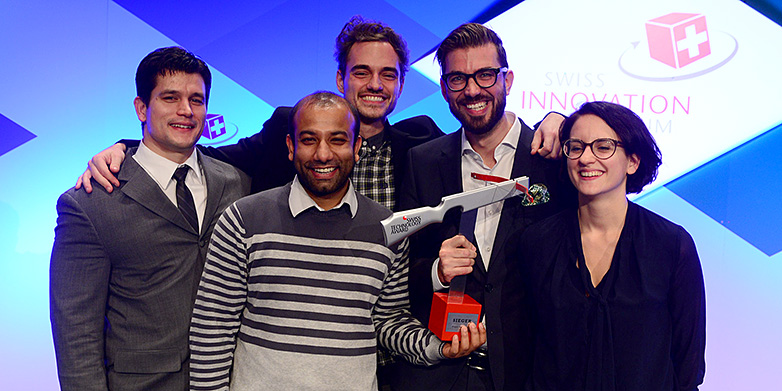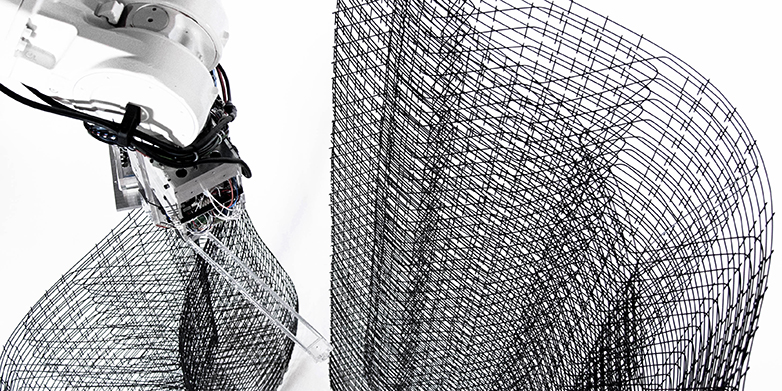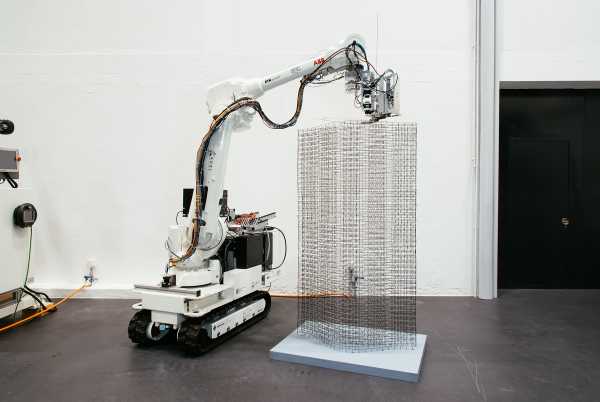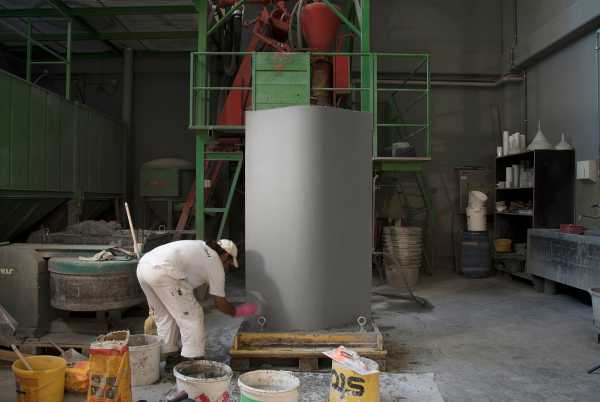An award for ETH building technology
ETH researchers have received this year’s Swiss Technology Award for their technology “Mesh Mould”, winning the most important Swiss prize for innovation and technology transfer in the “Inventors” category.
Innovation, technology – and construction: at first glance, these aren’t things that go hand in hand. The construction industry is not renowned for its groundbreaking inventions, and anyone who mentions technology is still most likely thinking of a digger. So – on second glance – it is perhaps not all that surprising that a new type of building technology has this year received the most significant Swiss prize for innovation and technology transfer in the “Inventors” category.
“Mesh Mould has the potential to fundamentally change how we build in the future,” says Norman Hack, Project Manager in the interdisciplinary team that developed the technology. Hack is a doctoral student at the Department of Architecture led by Professors Fabio Gramazio and Matthias Kohler, who had previously launched the project at the Future Cities Lab in Singapore. The close cooperation between other disciplines, such as robotics, materials science and structural mechanics, was essential for the development of the award-winning building technology.
Building without a timber formwork

In conventional concrete construction, the steel reinforcement is surrounded by a timber formwork that gives the concrete its final shape. Thanks to standardised structures, these formworks can be used multiple times. This is one reason why rectangular houses dominate our streetscape. When buildings have unusual shapes, on the other hand, the formworks must be made to measure and can only be used once. “These buildings are correspondingly costly and material-intensive,” remarks Hack.
The new Mesh Mould building technology no longer uses the timber formwork. It combines the functions of the formwork and reinforcement into a steel wire grid, which is manufactured by a robot based on a computer model. This grid is filled with concrete before the surface is ultimately processed. Thanks to the specific structure of the steel cable grid and the special composition of the concrete mix, the concrete stays inside the grid and does not seep out. “There is thus almost no limit to the shapes that can be created,” explains Hack. Irrespective of whether the target shape is standardised or highly complex in nature: a separate formwork is no longer needed.
First real-world application in 2017
In 2017, Mesh Mould technology will be used for the first time in the NEST building, a modular research and innovation building operated by the Swiss Federal Laboratories for Materials Science and Technology (Empa) in Dübendorf. There, the “In situ Fabricator” construction robot from the National Centre of Competence in Research (NCCR) “Digital Fabrication” will build a Mesh Mould wall, which will serve as one of the main structural components of the building unit.
How Mesh Mould works
Award to honour Swiss innovation
At today’s Swiss Innovation Forum, the external pageSwiss Technology Awardcall_made was presented for the 28th time. This award ceremony has been organised by the Swiss Economic Forum since 2007. The prize is awarded to honour the best technological innovations from start-ups, universities, technical institutions and established companies. From more than 50 applications received this year, an expert jury selected nine finalists in three categories. Five of these have their roots at ETH, and the “Inventors” category is no exception: here, in addition to Mesh Mould, the finalists also included the ETH spin-off InterAx Biotech AG and theMOFcompany. Two ETH spin-offs, Flisom and IRsweep, were also among the finalists in the “Start-ups” category, with the prize in this category ultimately going to Topadur Pharma AG. The “Innovation Leaders” prize, for which there were no ETH companies in the final, went to Ampegon AG.




